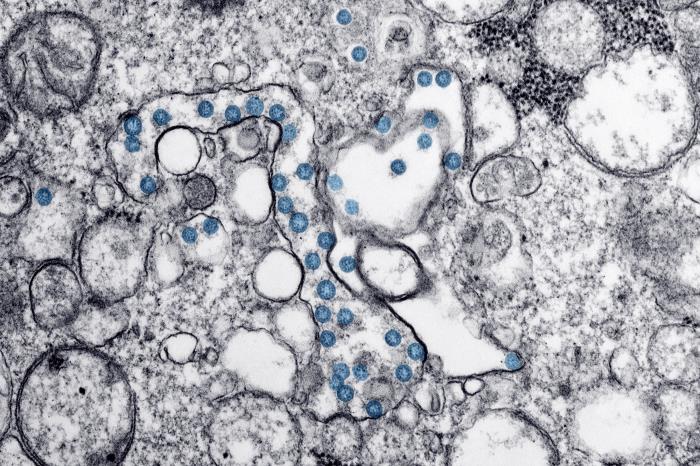By Jade Bruce, Second Year, Cellular and Molecular Medicine
A study conducted by University of Bristol researchers highlights important information about the structure and variability of SARS-CoV-2, which may underpin COVID-19 drug and vaccine research.
Since the emergence of severe acute respiratory syndrome coronavirus-2 (SARS-CoV-2), the virus has spread unforgivingly around the world. SARS-CoV-2 causes the respiratory illness COVID-19, and its local and global impacts thus far has been harrowing. It follows that there is now a frantic race to produce a vaccine for this novel virus. No single study will create a ‘miracle’ vaccine; instead, scientists around the world are cooperating to try and develop a vaccine in record time.
Working with other UK research groups, scientists at the University of Bristol from the School of Cellular and Molecular Medicine have sequenced the genetic material of SARS-CoV-2. They have been growing live human SARS-CoV-2 virus in a highly controlled lab to learn about how it interacts with both monkey and human cells. Their findings have highlighted important information about the structure of the virus and its tendency to change.
| A glimpse into the daily routine of an isolated student
Designing safe and effective antiviral drugs is a notorious challenge. Viruses hijack host cells and use their cellular machinery to replicate, making it difficult to target the virus without also harming host cells. However, Bristol research into modification of SARS-CoV-2 proteins is providing insight into the types of drugs which may be helpful to treat the virus.
New #COVID19 research highlights important implications for scientists around the world conducting vaccine trials aimed at preventing the disease. https://t.co/fYimgozctY #UnisTogether #UniSupport pic.twitter.com/izNBBQF4nn
— Bristol University 🎓 (@BristolUni) April 1, 2020
When a virus makes proteins, they can be modified – for example, they may be phosphorylated, where phosphate groups are added onto them. The researchers showed that SARS-CoV-2 has phosphorylated surface proteins. This is of clinical significance because there are existing drugs already licensed to treat medical conditions that act by altering the phosphorylation pattern of proteins. Such drugs may have the potential to treat an infected person by interfering with viral replication – however, further research is needed to fully assess this possibility.
The team also showed that when the virus is grown in monkey cells, the structure of proteins found protruding on its surface, known as spike glycoproteins, can change. These proteins are thought to promote entry into host cells and are a likely target of the human immune response.
| How the COVID-19 lockdown will be remembered in 50 years' time?
To study SARS-CoV-2, scientists must grow large amounts of the virus in a lab. When grown on this scale, the virus might alter its spike glycoproteins. This may mean that a vaccine is produced using an altered form of the virus, rendering it useless. Therefore, understanding the virus’ tendency to change its spike glycoproteins is crucial knowledge to underpin vaccine research. Scientists must ensure that the virus is not changing as they grow and study it.
Dr Andrew Davidson, Reader in Systems Virology, and Dr David Matthews, Reader in Virology, both from the School of Cellular and Molecular Medicine, explained: ‘Our findings show that when the virus is grown on a large scale it might alter the spike glycoprotein and that teams working on vaccines and drug testing will need to take extra care to make sure the virus is not changing when they grow it up in the lab.’
SARS-CoV-2 animation revealing the viral core. Free to use: for this and other visual resources please see our COVID-19 page at: https://t.co/JOcdg377cO #covid19 #SARSCoV2 #sciart @UofT @UTM @UTMBiology @UofTNews @ResearchUofT @UofTIMS @UTM_Research @UofTMedicine @UofT_dlsph pic.twitter.com/JMUaLEpecA
— Nicholas Woolridge (@N1ck_Woolridge) April 6, 2020
The team added ‘Our aim is to help researchers around the world make sure their virus stocks are suitable for their research by investigating how the virus changes in the lab compared to the virus that grows in people.’
Although still in its early stages, this University of Bristol research is a crucial contribution towards the global mission to understand, study and fight back against SARS-CoV-2. Hopefully, it can bring us one small step closer to developing a vaccine in this race like no other.
Featured image: Blue viral particles of SARS-CoV-2 shown in a transmission electron microscope image. Flickr / VCU Capital News Service
Want to write about your research? Get in touch!









